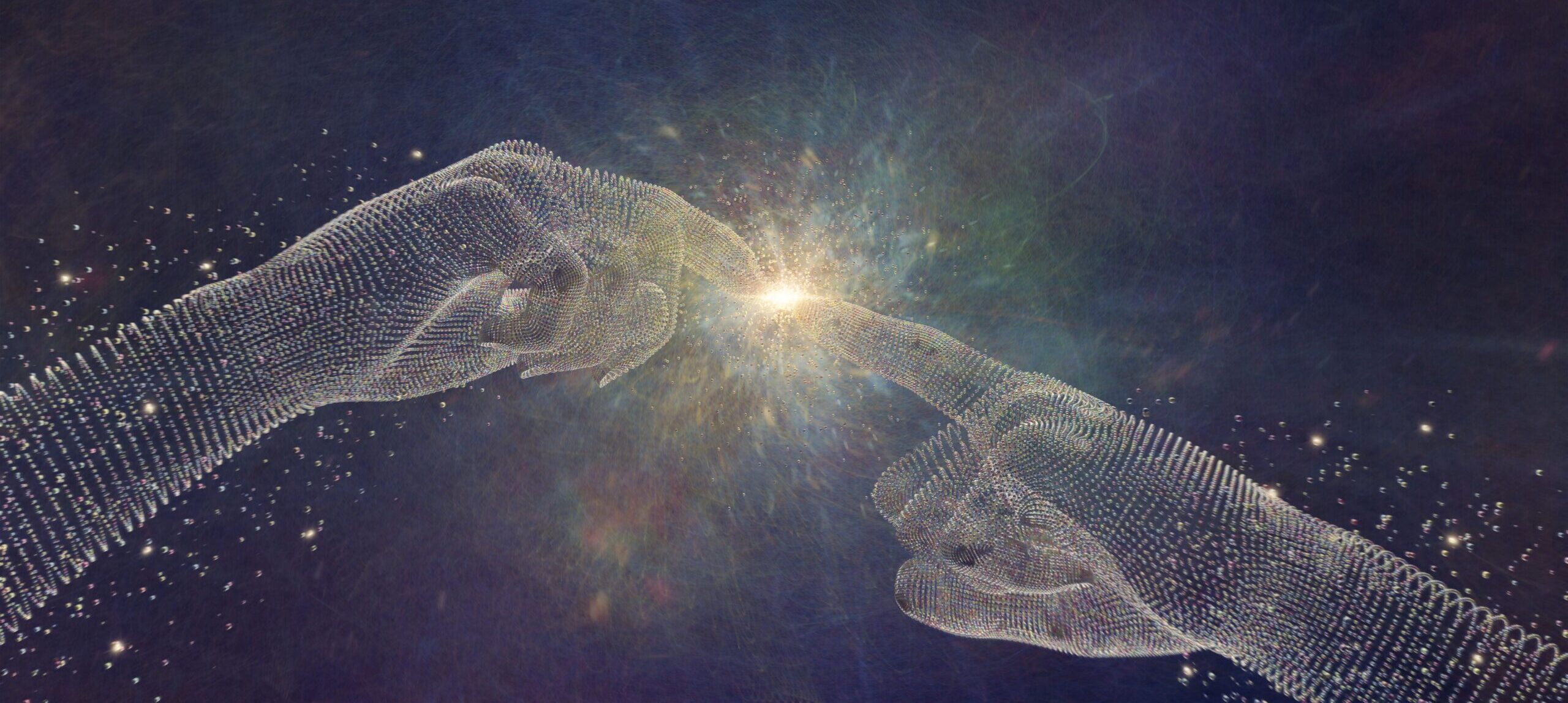Skin in the Game: Hidden Asymmetries in Daily Life
By Nassim Nicholas Taleb
(Random House, 2018)
The multitalented writer, businessman, and academic Nassim Nicholas Taleb hates being called an “intellectual,” so let’s instead refer to him as a thinker and note that he is one of the more important thinkers of our time. That importance comes not so much from the volume of work he has produced as from the fact that, with each new book, he gives his readers a significant and novel lens through which to look at the world. Each book has grown out of the previous one, so that something mentioned briefly in the last can become the subject of the next. Yet all of Taleb’s work is unified by its theme of confronting “the dark forces of time and ignorance,” is informed by a deep knowledge of probability and statistics, and is gleeful in its skewering of those who understand just enough about uncertainty to screw things up massively.
Taleb made a significant amount of money as an options trader, and his experience dealing with risk in that market has had a significant impact on his thought. After achieving financial independence, he went on to earn a PhD in management science from the University of Paris. He has since held a variety of academic posts, including a position as distinguished professor at the NYU Tandon School of Engineering.
In The Black Swan, his most famous work, Taleb highlighted how little we really can say about the “tails” of probability distributions. The importance of so-called tail risk might be understood as follows: banks investing in mortgages relied on models that assumed the risk of a nationwide decline in housing prices in the U.S. to be minute. But how “minute” is minute? Once in one hundred years? Once in one thousand years? Once in ten thousand years? The banks chose the “extremely unlikely” end of that spectrum—but they did so based on only a few decades of data! The Black Swan, published in 2007, has been credited with foreshadowing the financial crisis of the following year.
“Anti-fragility” was a minor theme in The Black Swan but became the major one of Taleb’s next full-length work, which appeared in 2012. Antifragile: Things That Gain from Disorder introduced a new category into our thinking about randomness. Before Taleb identified a new class of phenomena, entities were generally thought of as being robust—able to withstand random shocks—or fragile and easily broken by such shocks. Antifragile insisted on the need for a third category, signifying things that become stronger when stressed. The concept caught on slowly at first but is now finding applications in medicine, nutrition, exercise, finance, politics, physics, and information technology.
Antifragile also introduces a story that is probably crucial to understanding Taleb’s famously cantankerous public personality. (Full disclosure: Taleb is my colleague at NYU Tandon, and in person he is polite and friendly.) When Taleb’s great-grandfather was dying, he called his son—Taleb’s grandfather—to his bedside. He let his son know how disappointed he was in the fact that no one was bad-mouthing him. In his opinion, that meant his son was too wimpy to generate envy.
Taleb has made sure he will never face such criticism himself. He takes glee in launching feuds with prominent intellectuals such as Steven Pinker, Mary Beard, Cass Sunstein, and Paul Krugman. In fact, he coined a new term to describe such foes: IYIs, or “intellectuals yet idiots.” Among the characteristics of IYIs is that they trumpet their concern for the poor but never hang out with people of lower social status; praise “diversity” but have never gotten drunk with a minority cab driver or spent time in a Jamaican nightclub; are proud of their braininess but have never read Michael Oakeshott or John Gray; are self-proclaimed egalitarians but are obsessively concerned with their status in their university or their reviews in the New York Times.
The issue is bigger than hypocrisy. IYIs place great faith in “statistical” studies without understanding the foundations of statistics and pretend to be good “Darwinists” while holding in contempt traditions that have survived for thousands of years. Because they claim to know more than they really do, IYIs pose a serious threat to wise government and social stability.
Taleb’s new book, Skin in the Game—dedicated to Ron Paul and Ralph Nader—takes up this theme by extending his observations about asymmetrical risk into a thesis about how human institutions “learn” over time. Taleb begins by discussing Antaeus, the son of Mother Earth and Poseidon. According to Greek myth, Antaeus was unbeatable in a fight as long as he remained in contact with the ground. But Hercules was able to defeat him by lifting him in the air. For Taleb, the story teaches us to “keep our feet on the ground,” i.e., to keep in contact with the practical world. Nevertheless, we are plagued by theorizers lacking all practical experience. As Taleb puts it, “The curse of modernity is that we are increasingly populated by a class of people who are better at explaining than understanding.”
Taleb extends this trope to foreign policy. He goes after “interventionistas” who have repeatedly urged us to intervene in foreign countries—Afghanistan, Iraq, Libya, Syria—whose governments did not meet abstract standards of political acceptability. Each of those interventions made conditions significantly worse in the country being “saved.” Yet the interventionistas pay no price for wrecking the lives of millions. Instead they keep appearing on CNN and PBS as “experts” who should guide us in choosing what country to bomb next.
Taleb then describes what he calls the “Bob Rubin trade.” Robert Rubin, who was Treasury secretary under Bill Clinton, returned to the “private sector” at Citigroup, from which he received $120 million in compensation in the decade after leaving “public service.” But when the economic house of cards that his advice helped to construct collapsed in 2008, he suffered no consequences. Instead, it was hardworking plumbers and fishermen and farmers and Spanish-grammar specialists who paid the price, in the form of trillion-dollar, taxpayer-funded bailouts of insolvent banks. Taleb is not offering a personal attack: Rubin is merely a synecdoche for “banking professionals” in general. When the government decides that certain banks are “too big to fail,” it permits top employees of those banks to take extraordinary risks for extraordinary short-term profits, as those bankers know they will suffer few if any consequences should their actions ultimately result in catastrophic losses.
Many IYIs claim that more intensive oversight of the financial industry can limit this danger. Taleb, however, argues that the idea we can regulate our worries away is nonsense. Indeed, regulation was a partial cause of the financial crisis. Taleb notes that “the move [toward hedge funds] took place mostly because of the overbureaucratization of the system as paper shufflers (who think work is mostly about paper shuffling) overburdened the banks with rules—but somehow, in the thousands of pages of additional regulations, they avoided considering skin in the game.” In other words, lawmakers could have made bankers personally responsible for the meltdowns they create, for example by fining Rubin for his role in the 2008 financial crisis.
Taleb’s preference for personal responsibility over technocratic regulation leads us to the application of his “skin in the game” principle to ethics. Taleb contends that you shouldn’t put someone else’s skin in the game without putting your own in it as well. Taleb shows that this idea is at least as old as the Code of Hammurabi, which declared that if a builder constructed a house that collapsed and killed the occupant, the builder should be put to death. The “eye-for-an-eye” equivalence behind Hammurabi’s code does not need to be taken literally: we don’t need to cut off the leg of the surgeon who accidentally amputated the wrong leg of a patient. Taleb assures us that it is probably enough to “cut off” the surgeon’s golf club membership with a large lawsuit settlement, so that the patient is not the only one at risk during the operation.
More generally, Taleb urges us to be open to the lessons of experience. The “Lindy effect,” discussed in Antifragile, gets its own chapter in the new book. This principle derives its name from the story of actors meeting at Lindy’s, a New York City deli famous for its cheesecake. Those actors, speculating on how long some Broadway show would remain onstage, suggested that the best predictor of a show’s future run was how long it had already run. If a show had been running for three days, one’s best bet would be that it would run another three days. And if it had run for 30 years, the best bet is that it would run for another 30. This principle, Taleb contends, also applies to other social institutions and practices. If, for instance, Buddhism has lasted 2,500 years, it will probably be around for another few millennia. Meanwhile, the current progressive obsession with identity politics, which emerged 10 or 15 years ago, will most likely disappear in another decade or two. It is time, and not the opinion of “experts,” that is the ultimate judge of social practices.
The test of time is the basis for Taleb’s analysis of religion. He contends that we know far too little to determine the “rationality” of religious beliefs. Instead, we need to look at the effect they have on believers’ behavior and on their society as a whole. This approach, I think, is a shortcoming in Taleb’s work. While he defends traditional religions, he does so based solely on their beneficial practical effects. The idea that there might be transcendent truth at the core of religion, something worth respecting even if the practical effects of doing so might prove disastrous, does not seem to be of concern to him. Even Christology is examined in light of the book’s overarching theme. Taleb finds that the Church Fathers were wise: Christ had to be fully human, or he wouldn’t have had “skin in the game.” A divine figure just playing at being human, like Zeus or a visiting angel, isn’t really risking anything.
The conclusion of the book addresses why “ensemble risk” cannot be treated the same as “time risk.” The difference can be understood by considering a game of Russian roulette with a bullet in one of six chambers. The rules are that if the “house” pulls the trigger and you live, you get $6 million. If one hundred people play, we can say that the expected payoff for each averages out to $5 million. But we can’t say that the expected payoff for a single person playing one hundred times is $500 million. Instead, we expect, with near certainty, that he will be dead. And if he dies on the second trigger pull, he does not get to play the other ninety-eight times. This demonstrates why an individual cannot expect to get the “average” return from the market: at some point, he will lose enough that he will “cry uncle” and leave the market. Taleb contends that social scientists repeatedly confuse ensemble risk and time risk, leading to, for instance, their condemnation of risk aversion as “irrational.”
Taleb packs plenty more into a relatively slim volume. If you have enjoyed his previous books, this one will not disappoint you. And if you are unfamiliar with his work, Skin in the Game is a great place to remedy that problem. In this intellectual climate dominated by “interventionistas” and “IYIs,” nothing is more salutary than a bold and original thinker willing to call a fool a fool and a knave a knave.
Gene Callahan teaches computer science and mathematics at the NYU Tandon School of Engineering. He is the author of Economics for Real People and Oakeshott on Rome and America.













